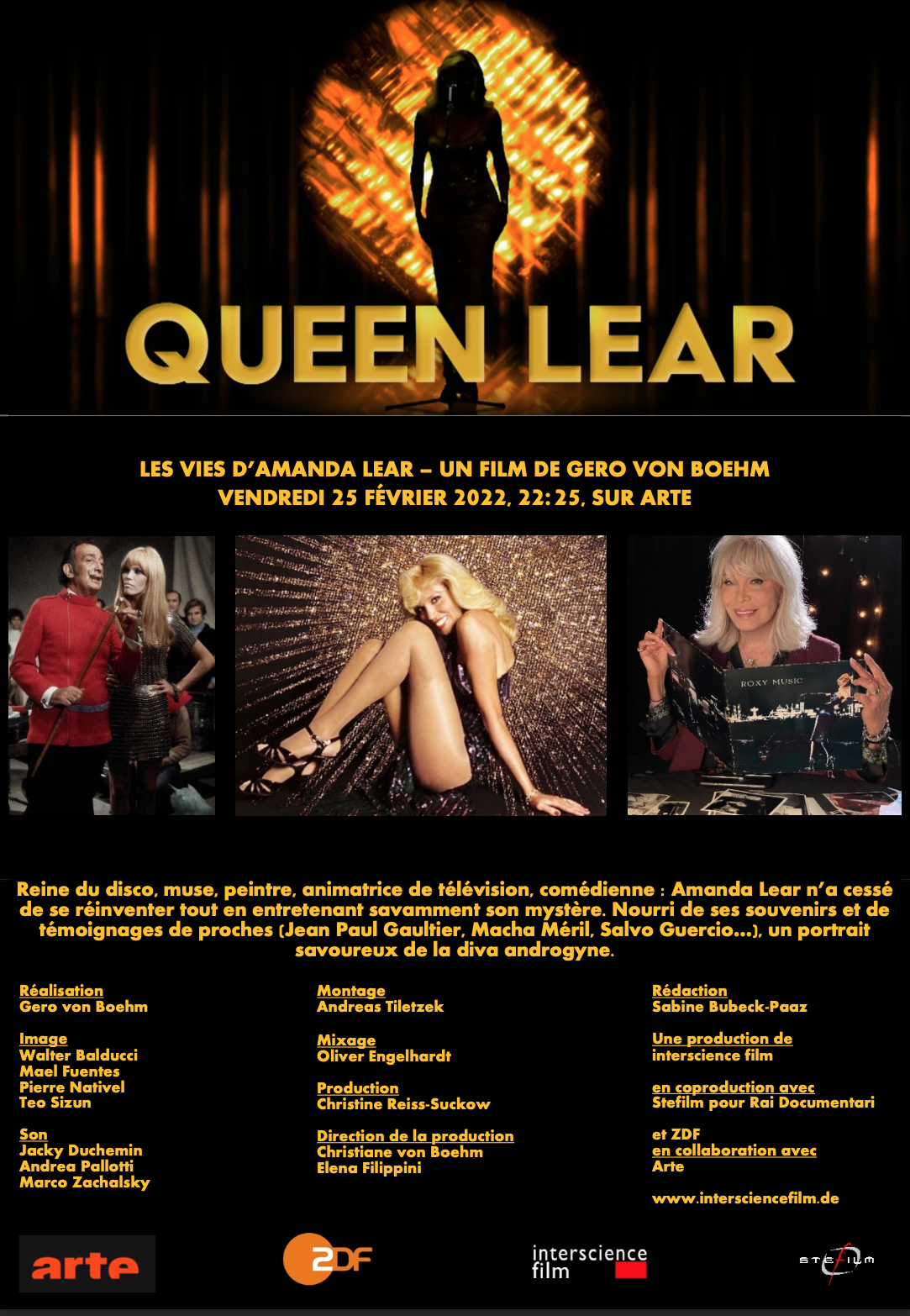A-D
E-H
I-N
O-R
S-T

For the first time in a documentary Amanda Lear recounts her eventful life, which was repeatedly marked by ruptures. The path to fame led through changing self-images, but these were created by others, mostly men. So the film is also a story of the search for identity and of playing with ambiguity - always accompanied by the myth that Amanda was transsexual and was born as a boy.
From being a model she became the muse of Salvador Dali, from being a muse she became the world-famous disco queen. Amanda Lear oscillated between the swinging London of the sixties and Parisian high society of the seventies, but was not able to identify with either of these worlds. In order to understand the ruptures that resulted out of this, the film uses extensive archive material to depict the zeitgeist that defined Amanda Lear's unusual life. Or as she herself says today, "I've lived several lives."
She was an early pioneer of the postmodern age of "celebrities" and self-invention. With unlimited ambition, Amanda Lear did everything she could to become “famous”, no matter for what. So she created a fictional character and became famous just for being Amanda Lear. Model and girlfriend of rock stars in England, muse of Salvador Dali in France, disco queen in Germany, the USA and Asia, television presenter in Italy - a woman on a never-ending, often painful, search for herself.
She is one of the most mysterious icons of the pop world. Amanda Lear wanted to be famous at any price. She started as a model at the age of eighteen, in Paris she was the muse and companion of Salvador Dali for fifteen years. Then she became a disco queen and sold 40 million records. She shared her life at times with stars like Brian Jones and David Bowie. "Queen Lear" tells of the life that was often defined by these men. But it is also a story of Amanda Lear's restless search for an identity, of constantly recurring liberations and farewells - from people, from self-images and ultimately also from the pursuit of fame.
THE POST INTERNAZIONALE Article

